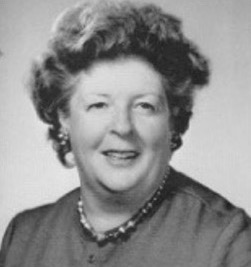How a Woman High School Teacher Changed My Life

I was born in Israel, where I stayed until finishing tenth grade at age 16. My family then emigrated to the US to join my father’s sister in the Boston area. We lived in Dorchester. Roxbury and Dorchester were populated primarily by low-income Jewish and Black families. Because the three selective high schools in Boston (English, Latin, and Technical) only admitted students entering their first year, Dorchester High School was my only option. So at 16, I started at Dorchester High School, but four months later, thanks to a woman teacher, I ended up somewhere entirely different.
Being from Israel, I needed to work on improving my English as fast as possible. I wasn’t at all familiar with the US education system, and getting a college education in the future was not on my mind.
I spent much of my four months at Dorchester with a dictionary, and in particular, learning English terms in Math, Physics, and Chemistry.
My teachers in Math and Physics (Mr. Best), Chemistry (Dr. Galarneaux), and English (Mrs. Dunn) concluded that I should skip the last year of high school and instead attend a university. I couldn’t afford college, and I couldn’t afford to move out of my parent’s house in Dorchester. The only university in Boston not requiring a high school diploma was MIT.
Mrs. Dunn took the lead in helping me complete the application process to MIT and advised me to take the standard SAT tests and the three subject tests in Math, Physics, and Chemistry. I spent June studying for the tests, then took the tests in July.
MIT received the results of the tests on August 15, 1964, and a few days later, awarded me a full scholarship to enter MIT in September of 1964.
After a year at MIT, my MIT grades were sent back to Dorchester High School, which then awarded me a high school diploma, and also included the following statement in the 1965 year book.
At MIT, I was fortunate to work for the Friedman and Kendall group, which was doing electron scattering experiments at the new Stanford Linear Accelerator Center (SLAC). I spent a summer at SLAC, and I wrote my MIT BS thesis on the extraction of electron scattering cross sections on neutrons bound in the deuteron. I continued to work with the Friedman and Kendall group as a graduate student at MIT. My PhD thesis in 1972 on the comparison of electron cross sections on neutrons and protons provided the first evidence that there were quarks with fractional charges in the proton and neutron. The 1990 Nobel Prize in Physics was awarded to the group leaders Kendall, Friedman, and Taylor "for their pioneering investigations concerning deep inelastic scattering of electrons on protons and bound neutrons, which have been of essential importance for the development of the quark model in particle physics." I was invited to attend the Nobel ceremony, and MIT generously covered all of my expenses.
Mrs. Dunn, my English teacher for only four months in a diverse low-income neighborhood, spearheaded Dorchester’s effort to fast forward me to MIT and ended up changing my entire life.
Arie Bodek,
George E. Pake Professor of Physics
University of Rochester
